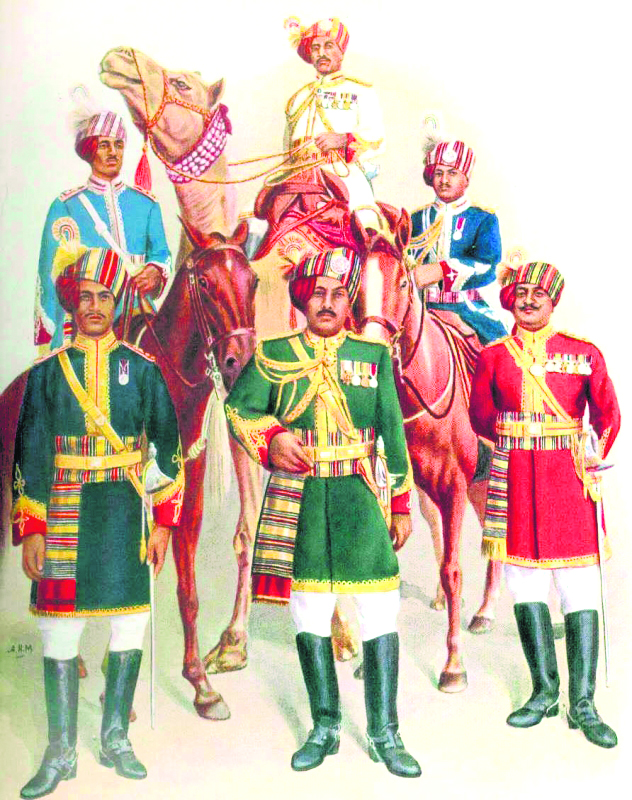In an interesting panel discussion with renowned IPR lawyer Safir Anand, Royal Fables brought together a handful of younger generation Rajputs to talk about the lesser known nuances of intangible heritage, and the imperative call to protect it. Having had convened the session as its moderator, I had the privilege of gaining crucial insights into Mr. Safir Anand’s valuable contentions. Within moments following the panel’s conclusion, the writer in me knew that I would give the cause a written form as a token of my personal conviction in its potential.
To begin with, it is important to understand what constitutes intangible heritage. As compared to our mainstream understanding of heritage in tangible forms such as monuments, palaces, forts, arts, crafts and artefacts, intangible heritage comprises of the experiential aftermath of experiencing heritage in its myriad forms. Mr. Anand provides an example of experiencing a particular cuisine in a renowned sub-regional household. The recipes involved, and the delicate ways of preparation, presenting and serving constitute a larger legacy that has possibly survived generations of continuity and change. This very exclusivity, that makes the experience unique, and the experience itself is what Mr. Anand explains to comprise of intangible heritage.
Given the modernising times we live in, where replications are inexpensive and largely inconsequential, the importance of identifying our intangible heritage becomes all the more imperative. The reason being that its authentic value needs to be defined first in order to be duly protected and honed in ways that safeguard its jeopardy by external parties in blatantly commercial sabotages.
Take for example Kishangarh’s Baijilal Vaishnavi Kumari and her unique symbolisation fo the Pichwai cow, a design prototype that she had created over a decade ago. Despite her direct commissioning and purchasing of the art block, she soon found to her dismay that that very design had been replicated at such a massive scale that legally seeking recourse was an unfathomable exercise. As Kishangarh’s modern-day scions and an active patron of its art school, Vaishnavi holds claim to this design prototype as her intellectual property, but knew little on how to negotiate her custodianship over it. Until Mr. Anand told her how.
In her primary identification of what constitutes her intangible heritage, which could be her pichwai cow in its conception through Kishangarh’s unique art form, its design, manufacturing and the experience it infuses in its patrons and customers, Vaishnavi would have identified her intellectual property. A matter of primary importance here would be one’s absolute ability in being able to establish their rightful ownership of the intangible heritage in question. Thereafter, the intellectual property is formalised through various means, such as a copyright, trade mark, design or patent.
Mr. Anand explained various forms of protection, wherein a title or logo or expression can be safeguarded as a trademark; a copyright bestows protection over an original music, literary or artistic work; and a patent protects innovation of process or product. Moreover, depending on aesthetic or ability of a garment or article to be recognised by trade as an origin like Burberry Check, patterns or configurations on garments can even be protected as a design or trade mark.
Bhavnagar’s Brijeshwari Kumari pertinently highlighted the more new age NFT or Non Fungible Token, which is a digitalised token used to help validate the ownership and rights of the article in question.
Once the intangible heritage has gained one of these legal forms of protection, it gains access to an entirely new realm of potential. One, its exclusivity has been defined and gained legal protection. With its particular authenticity being legally sanctified, the blatant imitation or misuse of the intangible heritage bears legal repercussions, a favourable deterrent for plagiarisers. Two, its official status as a protected intellectual property raises its chances of developing into an exclusive trade secret worthy of systematic monetisation. This feature is tremendously relevant in areas of art revival, wherein the artisan community suffers rapid decline due to the emergence of alternative manufacturing. In the absence of a copyright, trademark, patent or design protection, it becomes unviable for the particular art form to appeal for national or trans-national recognition. Mr. Anand adds that a copyright in particular is recognisable in 200+ countries and thus, is a powerful guarantor of its enforcement in most parts of the world.
Citing larger exemplars of the fashion world such as Hermes and Louis Vuitton, Mr. Anand familiarises us with the idea of protected intellectual properties creating an entire ecosystem that is duly secured. That is to say that if a larger brand gains legal protection for its intellectual property and intangible heritage, every level of its operations- from the artisan to the CEO are legally protected. The exclusive markers of its authenticity are therefore sanctified and optimised in their trade potential for the very reason of their exclusivity being recognised and certified.
Over time, the process of intellectual rights protection also helps assimilate the evolution of the heritage form involved with minimal dilution of its authentic form.
Speaking to this cohort in particular, Mr. Anand makes the powerful suggestion of forming an umbrella organisation of younger stakeholders, each one of whom shares with the other, the common value and intent of protecting their unique heritage. Not only does the idea of such a collective help sanctify a range of intangible heritage properties, but also accords a stronger lobby should any of its stakeholders find their intellectual property’s interests in conflict or danger.
His unparalleled wisdom and legal know-how notwithstanding, by simplifying his fascinating approach vis-a-vis intangible heritage as protected intellectual property, Mr. Safir Anand has given impetus to the younger generation of art & heritage revivalists, to reclaim their collective destinies by uniting in their common passion of revival.


 Vaishnavi Kumari.
Vaishnavi Kumari. Safir Anand.
Safir Anand.










